danielblaufuksvideo
(some works or excerpts only available upon request by email)
judenrein, 10', sound, video, 2018
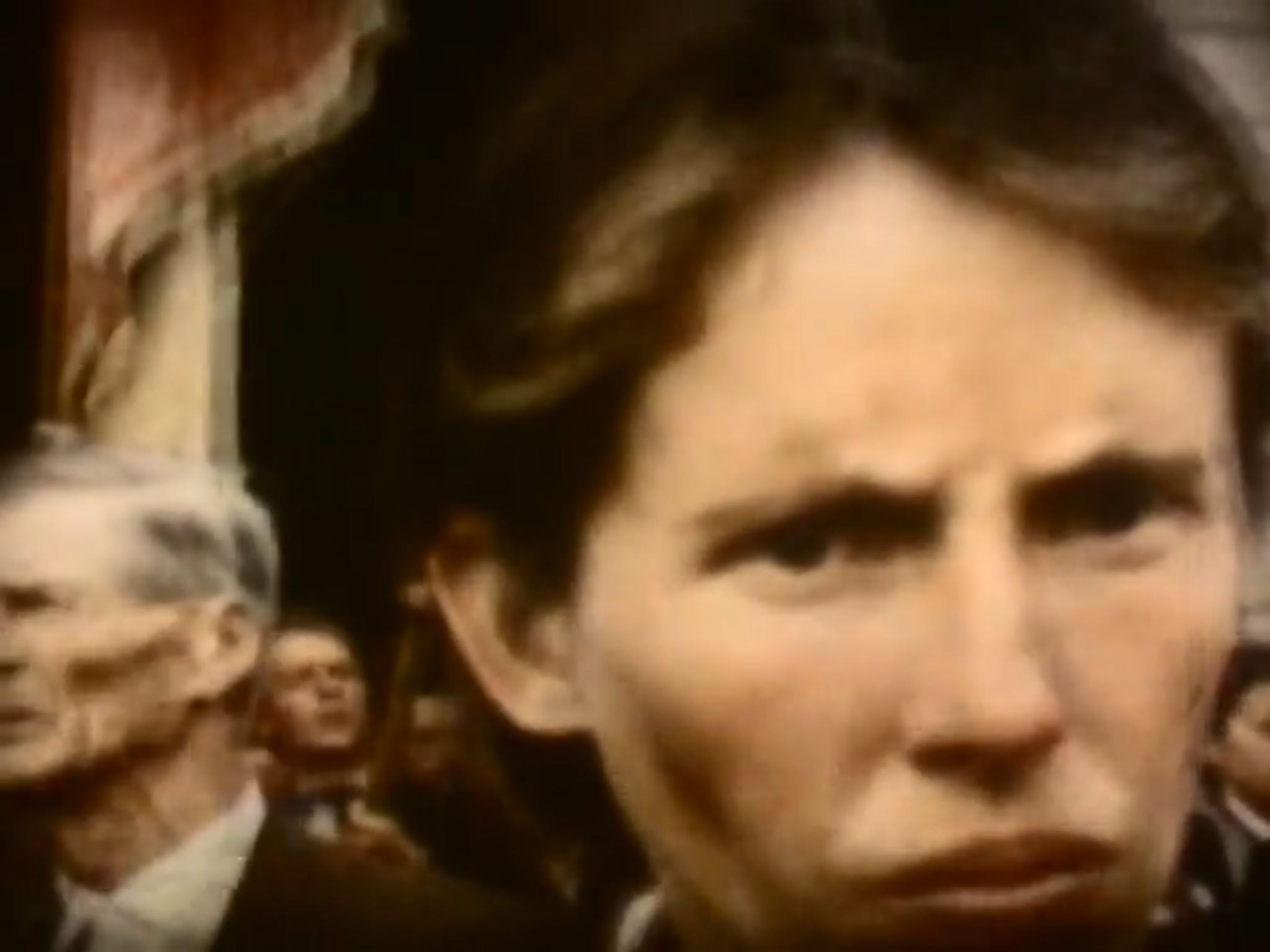
Using images from an old reel of amateur film, bought on e-bay, this personal work dwells on a place in Poland,
where Jews were once a larger part of the population and have completely disappeared in the aftermath of their return
from the concentration camps.
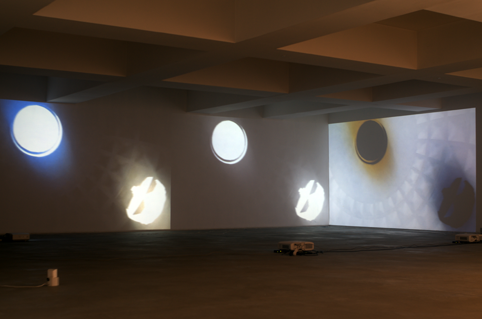
Houve um tempo em que estávamos todos vivos / There was a time we were all alive, 12.28', sound, video, 2018
a three channel video projection
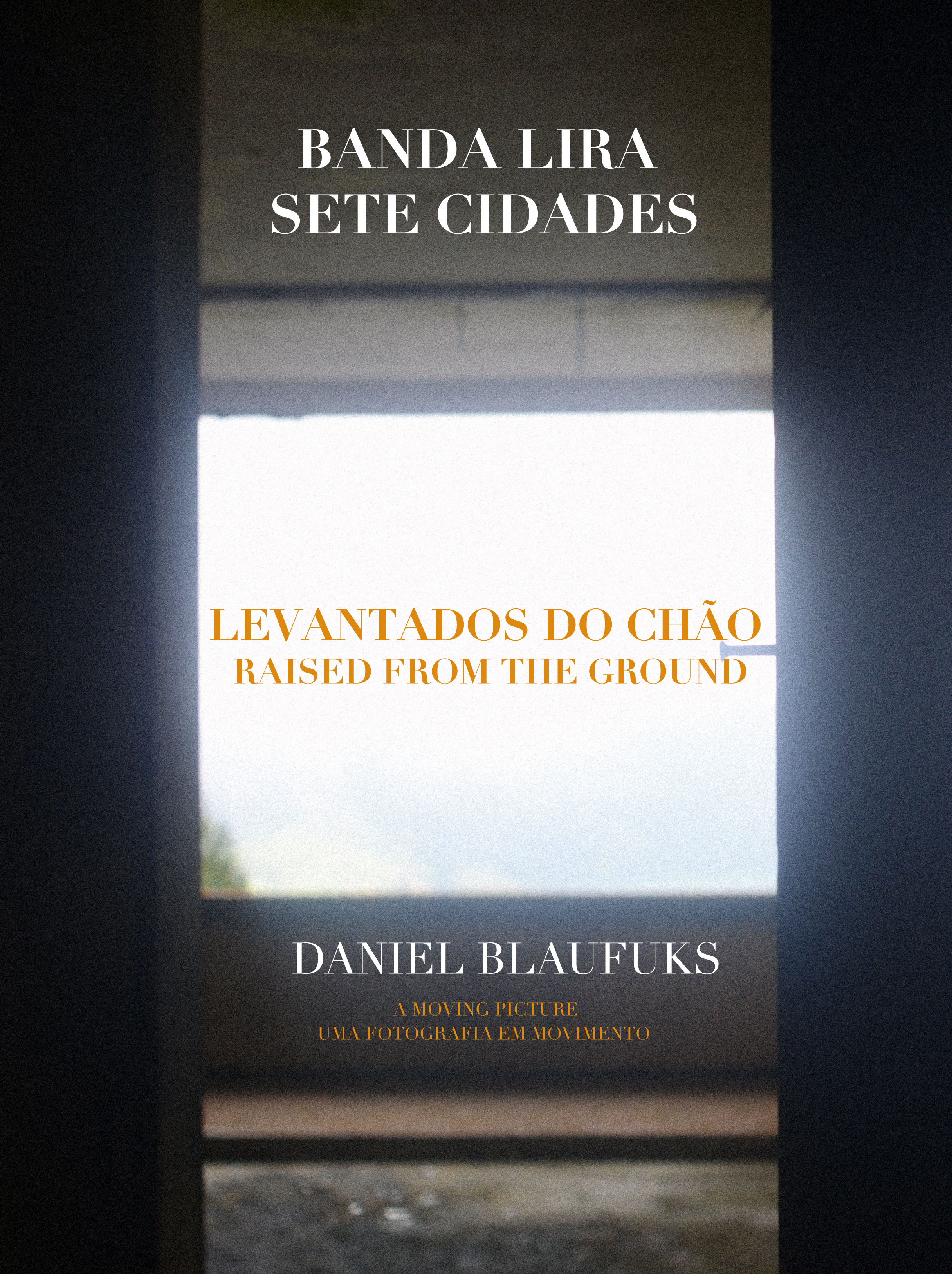
levantados do chão/ raised from the ground, 30', sound, video, 2018
Fellini encontra Tarkovsky, uma fotografia filmada com a Banda Lira Sete Cidades num hotel abandonado na ilha de São Miguel, Açores.
Fellini meets Tarkovsky, a filmed photograph with the orchestral Banda Lira Sete Cidades in a abandoned hotel on the island of São Miguel, Azores.
como se / as if, 4h43m, sound, video, 2014 (updated slightly longer versions in 2015 and 2016)
As If is a video film that, although part of my exhibition All the Memory of the World, Part One, is a work by itself and is best viewed in a large exhibition room, because of the small details in the image and its extended length of more than four and half hours. It is a film on the Czech city of Terezín (Theresienstadt), that follows the book and DVD I published years ago (Terezin, Steidl).
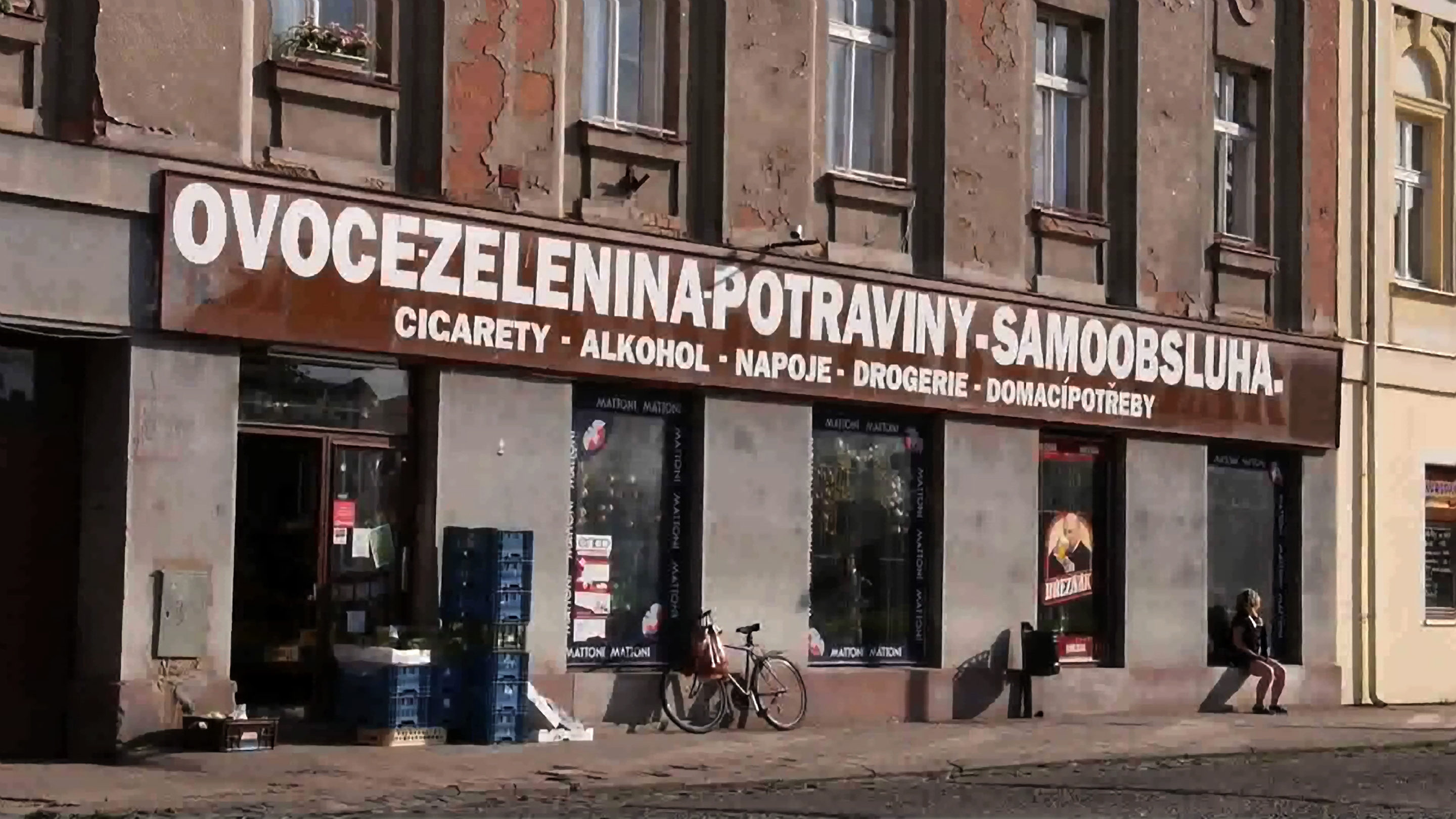
The work was conceived from the start for the large projection screen and was edited from different sources, so constructing a specific narrative and chronological structure, which intercalates these alternate layers. These are made of truth and fiction, of so-called document and of historical fake, of romanticised drama and of newsreels.
The spine of the work and from which the main narrative takes its cue, consists of the images that I recorded during late May and early June 2014 in the city itself, again called Terezín, now long after its brief period during the war as Theresienstadt. These images are also the larger part of As If, and consist mostly of wide-angled street views, house facades and closed building doors. They also include views of sun bathing girls, bored teenagers, playing children, elderly passing by, fast noisy cars roaring down, beer-buying men, etc., in fact, everything that makes up the life of a normal city and is somewhat reflected by the images from the second largest source, or layer, the fake documentary Theresienstadt made by the Germans in 1944, which pretended to show exactly this: how normal the city-ghetto-concentration camp was. There we can equally see elderly passing by, children playing, youths playing sports and chess-playing men. Some of the images dialogue directly with their previous counterparts, as they were purposely filmed in the same locations...
fábrica, 25', sound, video, 2013
'Fábrica' is a collection of images composed into an expanded scenery of memory, a walk through the abandoned spaces of one of the largest factories in Europe in an once flourishing industrial region, that never recovered from the loss of the textile market to the Chinese exports. The film is a documental piece, collecting different kinds of memories, crossing old photographs, manuscripts and objects with images of the present state of the building interiors and surroundings. The result is a reflection not only on the idea of a 'factory' in itself, most generic and abstract, but also about forgetting and abandonment, thus creating a significant memento about labor and the disappearance of the working class in Europe in the last century, which is one of the reasons for the present crisis in the region.
self-portray, 10', two monitors, sound, video, 2012
igualmente existente em fotografia, é um objecto a partir de uma imagem de Man Ray, um artista que experimentou muito com os seus “rayogramas”, redescobrindo essa antiga técnica de colocar um objecto debaixo da luz do ampliador para criar uma cópia da sua sombra, um positivo-negativo.
equally existing as photographs, is a a double object based on a double image by Man Ray, an artist who experimented fully with his “rayographs”, rediscovering an old technique of setting an object under the light of the enlarger to create a copy of its shadow, a positive-negative.
três quartos de memória, 24', sound, video, 2011
“Três quartos de memória" é um trabalho em vídeo e película super 8, filmado e apresentado originalmente na própria Fundação Eva Klabin no Rio de Janeiro, que procura dialogar com a sensação de suspensão do espaço e do tempo dentro desta, construindo ambientes sensoriais e tentando estabelecer hipotéticas relações entre as pinturas expostas, algumas fotografias do arquivo e as possíveis reminiscências contidas na própria casa.
O título “Três quartos de memória" é um jogo de palavras intencional, que fala do espaço da casa utilizado originalmente pela exposição, e que refere simultaneamente a impossibilidade de existir uma memória integral e objectiva.
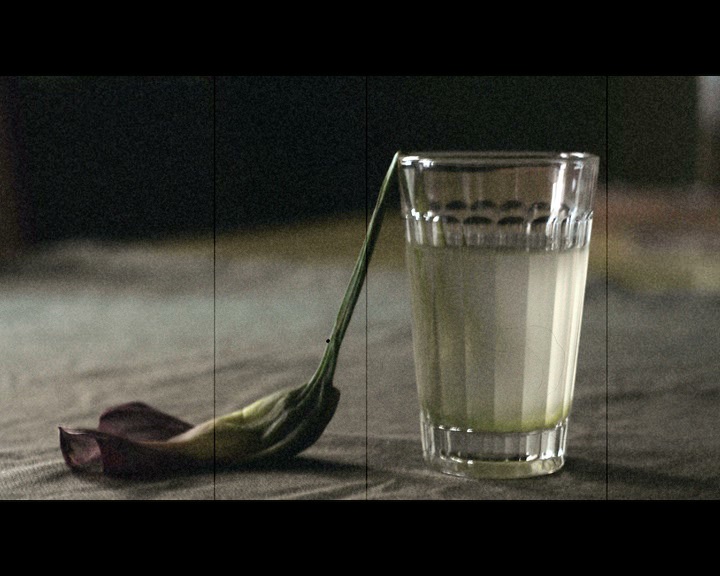
“Três quartos de memória" is a work in video and super 8, filmed and shown originally at the Eva Klabin Foundation in Rio de Janeiro, that tries to dialogue with the sensation of suspension of time and space within it, constructing sensorial atmospheres and aiming to establish hypothetical relations between the paintings of the collection, the family photographs in the archive and the probable reminiscences enclosed within the house.
The title “Três quartos de memória", which means simultaneously Three Quarters or Three Rooms of Memory, is an intentional word game, which not only refers to the space used originally by the exhibition, but also to the impossibility of an integral and objective memory as well.
eden, 60', doc., video, 2011
“O mar e o cinema eram as únicas formas de sair da ilha.” O olhar documentarista de Blaufuks conduz-nos a São Vicente (Cabo Verde), pelas memórias que o cinema deixou nesta ilha. Assente num interessante trabalho de pesquisa, tanto pela riqueza dos depoimentos, como pelas imagens, “Eden” é um filme que mergulha no imaginário contemporâneo de um povoe de um lugar através da relação destes com o cinema.
"The only two ways of leaving the island were the sea and the cinema." Blaufuks' documentary look lead us to S. Vicente (Cape Vert) and through the memories left on the island by the cinema. Based upon an interesting research work, both for the testimonies and for the images, "Eden" plunges into the contemporary imagery of a people and a place through their relation towards cinema.
carpe diem, 30', loop, sound, super 8, video, 2010
Um filme rodado no Palácio do Marquês de Pombal em Lisboa, que hoje alberga o espaço expositivo Carpe Diem, criado pelo curador Paulo Reis. A obra, filmada em película super 8, entrecruza os sons atuais do palácio, passos dos visitantes, da equipa, pássaros, aviões, etc., com as composições para piano de Luís de Freitas Branco, que aqui viveu e faleceu. Na sua apresentação original no próprio espaço do Carpe Diem, os registros gravados juntavam-se ainda aos ruídos em curso naquele próprio momento, criando uma certa confusão sonora entre o gravado e o real, entre o passado e o presente.
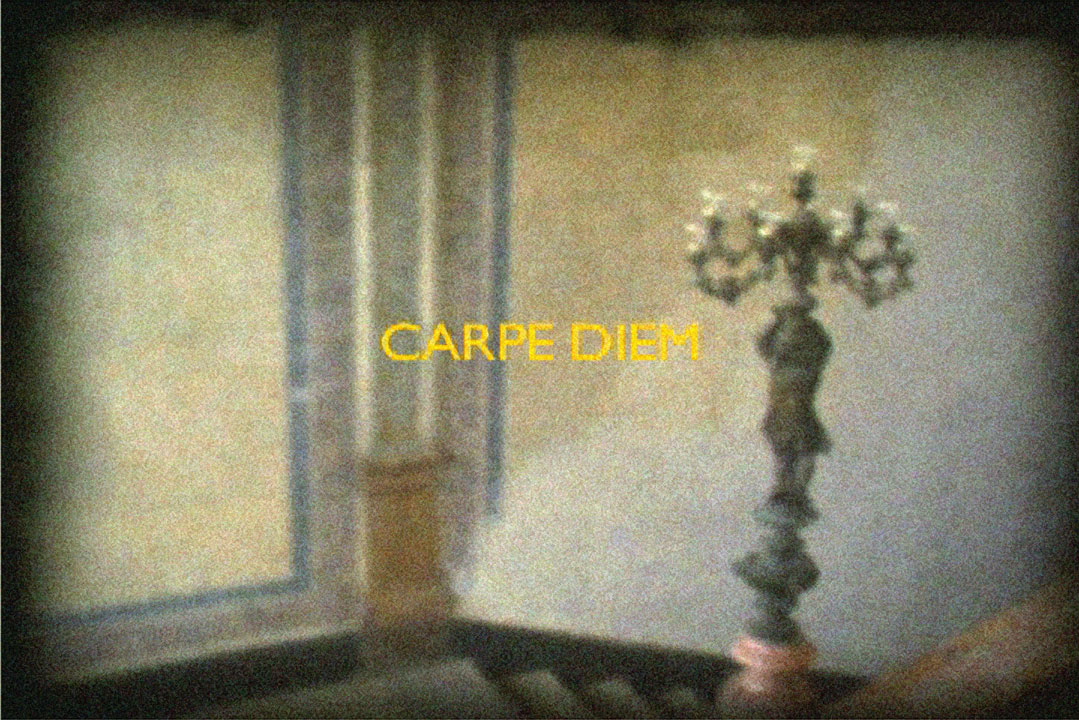
A film shot in the Palace of the Marquês de Pombal in Lisbon, where today is the exhibition space Carpe Diem, created by the curator Paulo Reis. The work, filmed in super 8, crosses the present sounds in the palace, visitors steps, birds, airplanes, etc., with the compositions for piano of Luís de Freitas Branco, who lived and died here, In its original presentation in the space of Carpe Diem itself, the recorded sound mixed as well with the actual live sounds of the space at that moment, creating a certain confusion between the archived and the real, the past and the present.
the square, various, 3 projections, loop, sound, video, 2009
A praça Djemaa el Fna em Marraquexe é desde sempre um encontro de pessoas e culturas. Aqui começa o deserto e finda aquilo a que chamamos de civilização. Hoje misturam-se aqui grupos de turistas, que acabam por ser a razão imediata da ainda existência deste fenómeno. O local está na lista dos “patrimónios intangíveis” da Unesco, devido à presença constante de contadores de histórias berberes, de músicos, de dançarinos, de pequenos circos, e foi cenário de algumas películas conhecidas.
Esta instalação documental consiste em duas projecções diurnas e uma nocturna, que se entrecruzam e se relacionam de formas diferentes a cada visionamento, dado os seus tempos de reinício nunca coincidirem. O som das três filmagens é sobreposto no mesmo canal, maximizando uma experiência virtual de um espaço único e complexo na sua geometria e no seu aparente caos.
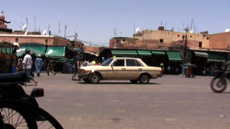
The Djemaa el Fna Square in Marrakesh has always been a meeting point for people and cultures. Here is where the desert starts and that which we call civilisation ends. Nowadays, there is a mixture of groups of tourists which end up being the immediate reason for the existence of this phenomenon. This place is on Unesco’s list of “intangible heritage” sites due to the constant presence of Berber storytellers, musicians, dancers, small circuses and has been the set for some well known films.
This documentary installation is formed by two daytime projections and a nocturnal one which intertwine and connect in different ways in each viewing, given the fact that their restarting times never coincide. The sound for the three shootings is superimposed on the same track maximising the virtual experience of a unique and complex space in its geometry and apparent chaos.
what is left is right and what is right is wrong, 5', loop, sound, video, 2009
Um exercício a partir de uma cena de Fred Astaire em Casamento Real, em que foi utilizada uma técnica de cenário e câmara rotativos, para simular ausência de gravidade. O mesmo sistema foi mais tarde utilizado e potenciado por Stanley Kubrick em 2001-Odisseia no Espaço para o mesmo efeito.
Neste vídeo, a imagem e o som são invertidos, verticalmente e horizontalmente, provocando uma sensação de desfasamento e estranheza.
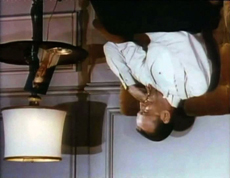
An exercise based on a Fred Astaire’s scene from Royal Wedding. This film applied rotational background and camera techniques in order to simulate the absence of gravity. The same system was used and expanded later on by Stanley Kubrick in 2001 – A Space Odyssey to achieve the same effect.
In this video, the image and sound are inverted vertically and horizontally causing a feeling of time lag and strangeness.
the absence, 20', loop, sound, video, 2009
Inspirado em La Disparition de Georges Perec, um romance escrito sem utilizar a letra E, este trabalho consiste numa remontagem do clássico A Bout de Souffle de Jean-Luc Godard, na qual todos os planos com a personagem principal, o papel de Jean-Paul Belmondo, desapareceram. O que resta nesta ausência é a nossa memória cinematográfica, que, instintivamente, tenta preencher este vazio, à volta do qual tudo parece girar.
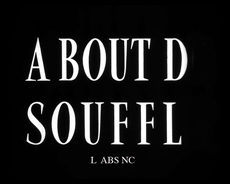
Inspired by La Disparition by Georges Perec, a novel written without using the letter “E”, this work is made from a re-editing of the classic French film A Bout de Souffle by Jean-Luc Godard, with the main character, played by Jean-Paul Belmondo, missing. What is left from this absence is our cinematographic memory which instinctively tries to fill in the void around which everything seems to revolve.
a perfect day at wannsee, 27', loop, sound, video, 2008
A Perfect Day at Wannsee insere-se em várias temáticas abordadas anteriormente, nomeadamente os vários projectos que integram a série A Perfect Day e os trabalhos em torno da história de família e da memória do nazismo.
A 20 de Janeiro de 1942, um grupo de oficiais superiores reuniu-se numa das luxuosas residências perto do lago Wannsee. A razão para este encontro era o intuito de melhorar o aproveitamento dos recursos disponíveis e acelerar o desaparecimento de todos os judeus na Europa, A “solução final para a questão judaica” é assim parte fundamental da minuta da Conferência de Wannsee, que omite e substitui por eufemismos as palavras extermínio, aniquilação, assassínio ou liquidação. Nesta reunião foi igualmente decidida a criação do campo de concentração de Theresienstadt.
A Perfect Day at Wannsee é construído a partir de um plano e do seu contra-campo. A primeira parte, uma imagem distante e bucólica da praia do outro lado do lago, é rodada a partir do terraço da casa onde a conferência nazi teve lugar. A segunda parte do vídeo é filmada no lado oposto, na praia de Wannsee e é apenas nos últimos minutos do vídeo que temos uma visão integral da casa, enquanto escutamos uma voz em alemão através dos altifalantes anunciar o fim do dia aos banhistas.
Este trabalho foi concebido a partir de uma recordação de um jovem judeu americano: quando se encontrava em Berlim por alguns meses, foi convidado para um dia de banhos por uns amigos alemães. Quando lá chegaram percebeu que estes o tinham levado a um local, cujo nome conhecia há muito e que estava directamente ligado à morte dos seus antepassados.
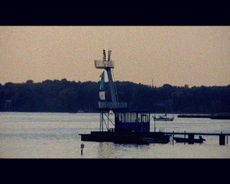
A Perfect Day at Wannsee is in line with several themes covered before, namely in projects included in the series A Perfect Day and the work about family history and the memory of Nazism.
On January 20, 1942, a group of higher officers met in one of the luxurious residences near Lake Wannsee. The reason for this meeting was to improve the use of the existing resources and accelerate the disappearance of all Jews across Europe. The “Final Solution of the Jewish Question” is therefore part of the minutes of the Wannsee Conference which omits and substitutes with euphemisms the words extermination, annihilation, murder and liquidation. The creation of the Theresienstadt concentration camp was also decided in this meeting.
A Perfect Day at Wannsee is made from a shot and its reverse shot. The first part, a distant and idyllic image from the other side of the lake, is shot from the terrace of the house where the Nazi conference took place. The second part of the video is filmed from the opposite side, in the Wannsee beach and it is only in the last minutes of the video that we get a complete image of the house, while we listen to a German voice through the loudspeakers announcing the end of the day to the bathers.
This work was conceived from a recollection of a young American Jew: while he was in Berlin for a few months he was invited for a day at the beach by his German friends. When they got there he realised that he had been taken to a place whose name he had known for a long time and which was directly linked to the death of his ancestors.
now remember, 105', loop, sound, video,2008
Seis monólogos inspirados por Georges Perec. Seis pessoas foram colocadas em frente de uma câmara e tiveram quinze minutos improvisados para recordarem livremente o passado, o presente e o futuro.
Ao serem apresentados em i-pods, permitindo assim apenas o visionamento e a audição por uma pessoa só, estes trabalhos transportam novamente as reminiscências pessoais de cada entrevistado, que se tornaram públicas ao serem registadas, para a memória pessoal e para a experiência singular de cada espectador.
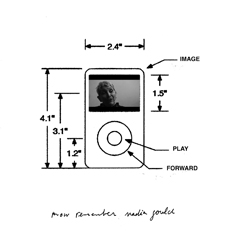
Six monologues inspired by Georges Perec. Six people were placed in front of a camera and given 15 minutes of improvisation to freely remember the past, the present and the future.
By presenting them on i-pods, only allowing for one viewer at a time, these pieces transport, once again, the personal reminiscences of each interviewee, which became public the moment they were recorded, into the personal memory and the singular experience of each viewer.
theresienstadt, 90', loop, sound, video, 2007
Através de uma tintagem e de um desacelaramento da velocidade dos restos da película desaparecida, recuperando assim a suposta duração original, este trabalho tenta encontrar alguma verdade nos excertos que restam de um filme de propaganda nazi sobre um campo de concentração modelo. Este trabalho insere-se em Terezín, um largo projecto fotográfico editado em livro e dvd.
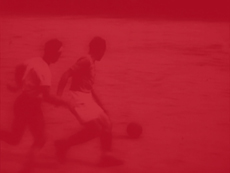
Through tinting and slowing down the speed of the remains of the original print, this work tries to find some truth in the remaining footage of a Nazi propaganda film. The video is part of Terezín, a larger photographic project edited in book and dvd.
Through tinting and by slowing down the speed of the remains of a lost film, thus recuperating the supposed original length, this work tries to find some truth in the excerpts that remain from a Nazi propaganda film about a model concentration camp.
This film is part of Terezín, a larger photographic project in book and on DVD.
cinema
motel, 10´min., loop, sound, video, 2006
Um curto vídeo que tenta recriar a experiência de uma noite interminável e a memória desta.
A short video trying to recreate the experience of a long night and the memory of it.
slightly
smaller than indiana, doc., 78', sound, video, 2006
No Verão de 2004 atravessei Portugal para filmar o meu projecto: um road movie sobre um país que se atravessa em seis horas de norte a sul e em hora e meia de leste a oeste. A paisagem que percorri, era o Portugal pós-Euro 2004
e prestes a entrar no governo provisório de Santana Lopes. É um país parecido com a imagem que todos nós ainda temos da “nossa terra”, mas que já deixou de corresponder à realidade e é quase irreconhecível, como num postal.
Foi esse pensamento que me levou a querer fazer este filme, veio confirmar, por vezes, de forma assustadora. Só conseguia pensar na letra de uma música do Morrisey: Hide on the promenade, etch a postcard: How I dearly wish I was not here in the seaside town that they forgot to bomb, Come, come, come - nuclear bomb… Mas não era isto que eu queria para o meu filme? Não era este caos que eu andava à procura e que me tinha feito meter nesta espécie de aventura?
A realidade superou as minhas expectativas e, sim, era isto que eu queria para omeu filme. O problema é que não era isto que eu queria para o meu país.
In the Summer of 2004, I traveled across Portugal to shoot my project: a road-movie about a country that can be crossed in six hours from north to south and just one hour and a half from east to west. The landscape I passed through was the post-Euro 2004 Portugal, with the provisional government of Santana Lopes about to take office. It is a country that still seems like the idea we all have of "our homeland", but which actually no longer corresponds to reality and is becoming almost unrecognizable, as in a postcard. It was this notion that led me to want to make this film eventually confirmed it, sometimes in an alarming way. Portugal today is a territory undergoing deep transformation, a mixture of what it was and an idea of America, which was imported and changed by Central Europe years ago. Meanwhile I could only think of the lyrics to a Morrissey song: Hide on the promenade, etch a postcard: How I dearly wish I was not here in the seaside town that they forgot to bomb, Come, come, come - nuclear bomb...But wasn't this what I had wanted for my film? Wasn't it this chaos that I'd come in search of and that had pushed me into this kind of adventure? The reality surpassed my expectations and, yes, this was what I wanted for my film. The problem was that this was not what I wanted for my country.
traum,
12' 20 min., loop, sound, video, 2006
Traum é uma fantasia não-narrativa em vídeo, baseada em memórias históricas.
Foi filmado na casa estilo parisiense abandonada de Aristides Sousa Mendes, que ainda hoje é o maior edifício numa pequena vila no centro de Portugal. Mendes era o cônsul de Portugal em Bordéus e em Junho de 1940, contra as ordens do seu governo, passou milhares de vistos a refugiados, permitindo assim a fuga através de Lisboa a muitos encurralados pela invasão alemã da França. Após três dias foi suspenso e trazido à força para Lisboa, onde foi expulso do serviço diplomático com desonra. Impossibilitado de trabalhar, tornou-se “um refugiado no seu próprio país”, e estava, tal como a sua larga família, dependente da agência judaica de ajuda aos refugiados em Lisboa. Morreu na pobreza em 1954.
Traum é a palavra alemã para sonho, que quer dizer uma história que acontece durante o sono. A palavra relacionada Trauma vem do grego e significa ferida. Ambas, a história sonhada e a ferida, são evocadas visualmente neste vídeo, que apresenta em movimentos extremamente lentos de câmara a casa de Mendes no seu estado actual e simultaneamente evoca o sonho que deve ter sido em tempos. Vemos uma taça de fruta em cima de uma mesa, vemos antigas fotografias e pinturas. A cabeça de João Baptista simboliza a fé católica de Mendes, que, segundo as suas palavras, incentivou o seu acto contra o regime em que acreditava, “perdendo a cabeça” dessa forma. O sonho e a experiência traumática uniram-se, a casa parece como bombardeada, perdida para a Guerra, num país que nunca sofreu bombardeamentos.
A música utilizada é de Dmitri Shostakovich, que teve igualmente uma relação difícil com o seu governo e que fundou TRAM, um teatro juvenil proletário.
Traum is a non-narrative video fantasy, based on historical memories.
It was shot on location in the abandoned Parisian-style house of Aristides Sousa Mendes, which is still the largest building in a small village in the center of Portugal. Mendes was the Consul of Portugal in Bordeaux and, against the orders of his government, passed thousands of entry visas to refugees in June 1940, permitting in this way the escape through Lisbon to many people, who had been trapped by the German invasion of France. After three days he was suspended and taken by force to Portugal, where subsequently he was expelled from the diplomatic service and dishonored. Unable to work, he became “a refugee in his own country” and was, as well as his large family, dependent on aid from the Jewish refugee agency in Lisbon. He died in poverty in 1954.
Traum is the German word for dream, which means a story that occurs during sleep. The related word Trauma comes from the Greek and it means a wound. Both, the dream story and the wound are visually evocated in this video, as it shows in very slow camera movements the Mendes house in its present state and simultaneously remembers the dream it once must have been. We see a bowl of fruit on a table; we see old photographs and paintings. The head of John the Baptist symbolizes Mendes Catholic faith, that, according to his words, made him act against the regime he believed in and to “loose his head” in the process. The dream and the traumatic experience became one, the house looks in the video as if it was bombed, lost to the war, in a country that never suffered any bombings.
The music used is by Dmitri Shostakovich, who had a difficult relationship with his government and founded TRAM, a proletarian youth theater.
motel, 4´min., loop, sound, video, 2005
video
Um curto vídeo que tenta recriar a experiência de uma noite interminável e a memória desta.
A short video trying to recreate the experience of a long night and the memory of it.
a
perfect day, 40´min., loop, sound, video, 2002-2005
excerpt
Baseado na escrita de Georges Perec, este vídeo é uma longa sequência de postais de céus azuis radiantes ao som de um curto loop do refrão da conhecida música de Lou Reed com o mesmo título. Ao espectador resta deixar-se embalar por este aborrecido e monocórdico trabalho em que imagens de praias sucedem a imagens de hotéis e estas a imagens de cidades e de montanhas intermináveis.
O trabalho foi realizado e apresentado em Nova Iorque após o 11 de Setembro, que segundo uma testemunha “was such a perfect day”, e faz parte de uma série de trabalhos com este título.
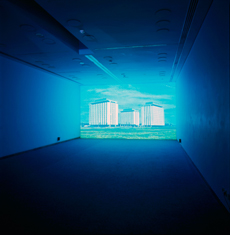
Based on Georges Perec’s writings, this video is made from a long sequence of postcards of glorious blue skies set against a short loop of Lou Reed’s famous song of the same title. All the viewer has to do is let himself be rocked by this monotonous piece where images of the beach follow images of hotels, cities and never-ending mountains.
A Perfect Day was made and shown in New York after 9/11, which according to a witness “was such a perfect day” as is part of a series of work with the same title.